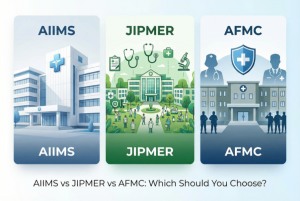Mind Maps for Better Learning
Learning can be overwhelming when you’re surrounded by piles of notes, textbooks, and endless topics to remember. But what if there was a smarter, faster, and more visual way to learn? That’s exactly what Mind Maps for Better Learning offer.
Mind mapping is one of the most powerful techniques for organising information and improving memory. It turns boring notes into colourful, easy-to-follow visuals that help you learn more effectively and recall concepts faster. Whether you’re a school student, college learner, or preparing for competitive exams, mind maps can be your ultimate study hack!
What Are Mind Maps?
A mind map is a diagram that visually organises information around a central topic. Think of it as a “map” of your thoughts. You start with one main idea in the centre, then branch out into related subtopics using keywords, images, and colours.
This technique mimics how our brain naturally thinks — associating ideas rather than memorising lines of text. That’s why Mind Maps for Better Learning are so effective: they make studying visual, logical, and fun.
Why Mind Maps for Better Learning Work So Well
Let’s explore why mind maps for better learning are considered one of the most effective tools for studying smarter:
-
Boosts Memory Retention
Our brains remember visuals better than plain text. Using colours, icons, and branches helps retain information longer. -
Simplifies Complex Concepts
Breaking a topic into smaller chunks makes it easier to understand, especially in subjects like biology, history, or economics. -
Encourages Active Learning
Drawing or creating your mind map requires you to think, summarise, and connect — promoting deep learning. -
Saves Time During Revision
One glance at your mind map can refresh an entire chapter before exams. It’s faster than rereading pages of notes. -
Boosts Creativity
Mind maps are colourful and flexible, helping you stay engaged and motivated while studying.
How to Create Mind Maps for Better Learning
Here’s a step-by-step guide to using mind maps for better learning effectively:
1. Start with the Central Idea
Write your main topic in the centre of the page (for example: “Photosynthesis”). Use bold text or a bright colour so it stands out.
2. Add Main Branches
Draw lines radiating from the centre to represent main ideas. For photosynthesis, you might add branches like “Light Reaction”, “Dark Reaction”, and “Chlorophyll”.
3. Include Sub-Branches
From each main branch, add smaller branches for details — formulas, processes, or key terms.
4. Use Keywords and Images
Keep text short. Use single keywords or short phrases with icons or small doodles. This helps trigger your visual memory.
5. Color-Code Your Map
Use different colours for branches to group similar ideas and make your mind map visually appealing.
6. Review Regularly
Mind maps aren’t static. As you learn, update and expand them with new connections or examples.
Digital Tools for Making Mind Maps
If drawing by hand isn’t your style, use digital tools to create mind maps for better online learning. They save time and can be easily edited or shared.
Here are some great apps and platforms:
-
XMind – Perfect for detailed, professional-looking mind maps.
-
MindMeister – Great for real-time collaboration with classmates.
-
Coggle – Simple, colourful, and ideal for beginners.
-
Miro – Great for both personal and group brainstorming.
-
Lucidchart – Combines diagrams and mind maps for study notes.
Practical Ways to Use Mind Maps for Better Learning
Here’s how students can make the most of mind maps across different subjects and study goals:
-
Summarise Chapters: Turn long notes into a one-page mind map for quick revision.
-
Plan Essays or Projects: Use branches to structure your ideas before writing.
-
Remember Formulas or Events: Group similar items for better recall.
-
Revise Before Exams: Quickly review important topics in minutes.
-
Brainstorm New Ideas: Great for creative subjects like literature, design, or marketing.
Tips to Make Effective Mind Maps for Better Learning
To maximise your results, follow these expert tips:
-
Use one keyword per branch for clarity.
-
Add icons or doodles to make maps visually memorable.
-
Keep branches evenly spaced for readability.
-
Use colour-coding for different sections or topics.
-
Keep your design simple — it’s about learning, not perfection.
Remember, the goal of Mind Maps for Better Learning is to make information clearer and easier to recall — not to create art!
Benefits of Mind Maps for Students
Using mind maps for better learning regularly offers many academic and mental benefits:
-
Enhances critical thinking and comprehension
-
Reduces study time significantly
-
Improves focus and concentration
-
Increases confidence during exams
-
Makes studying enjoyable and interactive
Conclusion
Mind maps for better learning are one of the smartest tools any student can use to master their subjects. They help you visualise information, build stronger memory links, and study creatively.
Whether you’re revising for an exam, summarising a chapter, or brainstorming for a project—a mind map can help you learn faster and smarter.
So grab your notebook or open a mind mapping app today. Create your first map and see how this simple study hack can transform the way you learn!
Also Read: Top Ways to Improve Reading Comprehension







